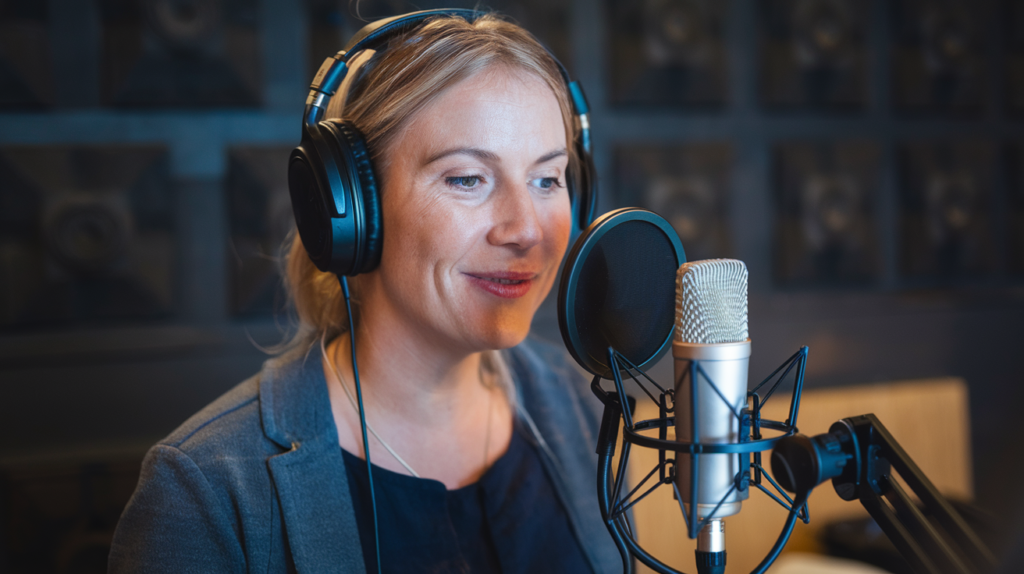Key Takeaways
- Understanding Language Variants: New Zealand English and British English each have unique characteristics that can significantly impact audience engagement in media content.
- Pronunciation Matters: Distinct pronunciation differences exist, with New Zealand English featuring unique vowel shifts that enhance relatability for Kiwi audiences, while British English often conveys authority through Received Pronunciation.
- Vocabulary Differences: Familiarity with vocabulary is crucial; using local terms enhances authenticity in New Zealand content, whereas British English slang may confuse non-native speakers if not used appropriately.
- Cultural Relevance: Integrating cultural references and expressions into your media content fosters a deeper connection with the target audience, making it more relatable and engaging.
- Audience Demographics Influence Choice: Tailoring language choice to your target demographic—opting for New Zealand English for local appeal versus British English for broader international reach—is essential for effective communication.
- Selecting the Right Voice Talent: Engaging voice artists who understand the nuances of either dialect can elevate your media project by ensuring clarity and cultural resonance.
Are you torn between New Zealand and British English for your media content? You’re not alone! With globalization connecting audiences like never before, the choice of language can significantly impact how your message is received.
New Zealand English brings its unique flair and localisms that resonate with Kiwi audiences, while British English carries a certain prestige and familiarity in many parts of the world. Understanding the nuances of each can help you connect better with your target audience. So how do you decide which one to use? Let’s dive into the key factors that will guide your decision-making process and ensure your content hits home every time.
Overview of New Zealand and British English
New Zealand English and British English each possess unique characteristics that influence media content. Understanding these differences helps you choose the right language variant for your audience.
New Zealand English
New Zealand English reflects the country’s culture, including Māori influences. It’s distinct in pronunciation, vocabulary, and idioms. The accent is often described as melodic, with certain vowel shifts that set it apart from other forms of English. Terms like “jandals” (flip-flops) or “biscuit” (cookie) are common in everyday conversation.
When creating media targeting a New Zealand audience, using local expressions resonates deeply. This connection can enhance engagement and relatability, making your content feel more tailored. Voiceovers in New Zealand English carry a friendly tone that aligns well with local values.
British English
British English offers a more traditional approach to language use, recognized globally for its prestige. Varieties include Received Pronunciation (RP), which signifies refinement but may seem less relatable to modern audiences. Vocabulary can also differ significantly; for example, “lift” instead of “elevator,” or “flat” instead of “apartment.”
Utilizing British English can lend an air of authority to your media projects. However, be mindful of regional variations within the UK itself—accents and terminology vary widely across England, Scotland, Wales, and Northern Ireland.
Choosing Between Them
When deciding between New Zealand and British English for voiceover work or other media formats, consider your target audience’s preferences. If you’re aiming for authenticity in reaching a Kiwi demographic, opt for New Zealand English; if you seek a broader appeal with an authoritative tone, British English might serve better.
Your choice influences how effectively you communicate ideas through voice talent or voice actors’ performances. Engaging the right voice artist ensures clarity while resonating with listeners’ cultural contexts—an essential aspect when crafting impactful media messages.
Key Differences Between New Zealand and British English
Understanding the differences between New Zealand English and British English helps you make an informed choice for your media content. Each variant carries unique features that can impact audience engagement.
Pronunciation Variations
Pronunciation is one of the most noticeable differences. In New Zealand English, vowel sounds often shift; for example, “fish” may sound more like “fush.” This distinct accent is rooted in local culture and influences how listeners perceive authenticity. When selecting voice talent for a Kiwi audience, choosing a voice artist familiar with these nuances enhances relatability. Conversely, British English typically adheres to Received Pronunciation or regional accents that convey tradition and authority. If you’re targeting an audience that relates more to British norms, opting for a voice over actor who embodies those characteristics can strengthen your message.
Vocabulary Distinctions
Vocabulary also varies significantly between the two forms of English. New Zealand incorporates Māori words and unique slang into everyday language; terms like “bach” (a holiday home) or “jandals” (flip-flops) are commonplace. Using these local expressions in your media makes it resonate more with a New Zealand audience. On the other hand, British English has its own set of idioms and phrases; words like “lorry” instead of “truck,” or “boot” instead of “trunk,” might confuse non-native speakers if used incorrectly in different contexts. It’s crucial to align the vocabulary with your target demographic’s expectations, especially when hiring voiceover talent whose delivery reflects familiarity with either dialect.
Choosing between these variants shapes not just language but also cultural connection through effective communication strategies tailored to your specific audience needs.
Cultural Contexts in Media
Cultural contexts play a crucial role in media, particularly when choosing between New Zealand English and British English. Understanding these nuances ensures your message resonates with the right audience.
Representation of New Zealand Culture
New Zealand culture is rich and diverse, shaped by its indigenous Māori heritage and contemporary influences. Using local expressions and culturally relevant references can enhance authenticity. For instance, incorporating Māori terms or concepts not only enriches your content but also fosters a deeper connection with Kiwi audiences. When selecting voice talent for projects aimed at New Zealand viewers, you might prioritize artists who understand this cultural backdrop. Their ability to convey local nuances through their performances makes content relatable and engaging.
Influence of British Media
British media enjoys global recognition due to its long-standing traditions and widespread consumption. The prestige associated with British English often attracts audiences seeking authority or sophistication. However, relying solely on this variant may overlook regional preferences that differ across countries influenced by British culture. Voice actors skilled in British accents can effectively communicate ideas while maintaining cultural relevance; they must still adapt their delivery to fit specific demographics within the audience spectrum. Keeping these distinctions in mind helps tailor your message for maximum impact while choosing the right voice over talent to deliver it authentically.
Recognizing how cultural contexts shape perceptions allows you to make informed decisions about language variants in media production.
Practical Considerations for Media Production
When producing media, choosing the right English variant impacts your project’s success. Understanding audience demographics and regional relevance helps you make informed decisions.
Audience Demographics
Your target audience shapes how effectively your message resonates. If you’re aiming at a Kiwi crowd, New Zealand English feels more relatable. Using local expressions and idioms connects with viewers on a personal level. For instance, incorporating phrases familiar to New Zealanders can enhance engagement in advertisements or educational content.
Conversely, if your content targets a broader international audience, British English might be preferable. Its prestige often lends authority to the message, appealing to those who value tradition in media consumption. However, be mindful of potential vocabulary differences that could confuse non-native speakers.
Regional Relevance
Regional nuances significantly affect how audiences perceive your content. In media production aimed at New Zealanders, employing voice talent familiar with local dialects ensures authenticity. A voice artist with a grasp of distinct vowel shifts and slang adds depth to the project, making it feel genuine.
For British English projects, consider the various regional accents available across the UK. Each accent can evoke different feelings and associations among audiences—some might prefer a classic Received Pronunciation while others may respond better to regional dialects like Cockney or Scouse.
Ultimately, aligning language choice with cultural context enhances relatability and effectiveness in communication during media production. This connection fosters trust between you and your audience while allowing ideas to flow seamlessly through well-chosen voiceovers that resonate deeply within their cultural framework.
Conclusion
Choosing between New Zealand and British English for your media content can significantly impact audience engagement. By considering cultural relevance and language nuances, you can make a decision that resonates with your viewers. If you’re targeting a Kiwi audience, embracing New Zealand English will enhance relatability and authenticity.
On the other hand, opting for British English may broaden your appeal and lend an air of authority to your content. Ultimately, aligning your language choice with the preferences of your target demographic not only improves communication effectiveness but also fosters trust. Your ability to connect through language can elevate your media projects to new heights.
Frequently Asked Questions
What is the main focus of the article?
The article focuses on the dilemma of choosing between New Zealand English and British English for media content. It highlights how language impacts audience engagement in a globalized world, emphasizing local appeal versus prestige.
Why is New Zealand English important for local audiences?
New Zealand English incorporates local expressions and reflects the country’s culture, including Māori influences. Using it can enhance relatability and audience engagement, making content feel more authentic to Kiwi viewers.
How does British English differ from New Zealand English?
British English is often viewed as more traditional and prestigious, with distinct vocabulary differences and regional variations. In contrast, New Zealand English features unique pronunciation and slang that resonate better with a local audience.
When should I choose New Zealand English over British English?
Choose New Zealand English when your target audience is primarily Kiwi. It fosters authenticity and connection by using culturally relevant references that resonate with locals.
What role does voice talent play in language choice?
Engaging the right voice talent significantly enhances communication effectiveness. A native speaker familiar with local dialects boosts relatability in New Zealand projects, while various British accents can convey tradition or authority in broader contexts.
How do cultural contexts impact media production choices?
Cultural contexts shape how effectively ideas are communicated. Understanding your audience’s preferences ensures that your content resonates authentically—using appropriate language variants enhances trust between creators and their audiences.







